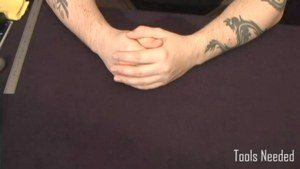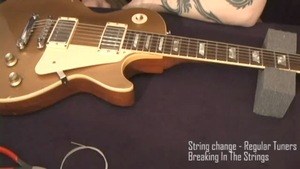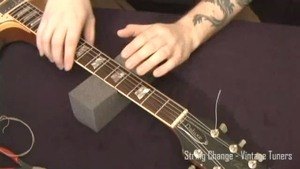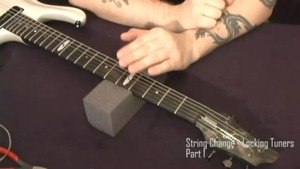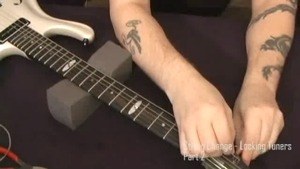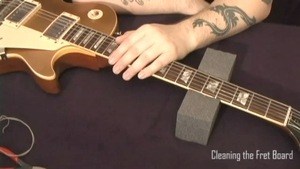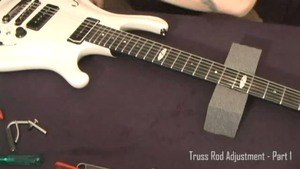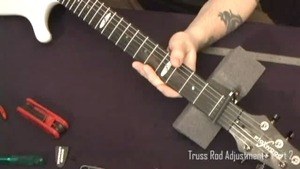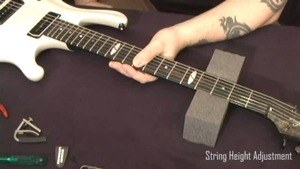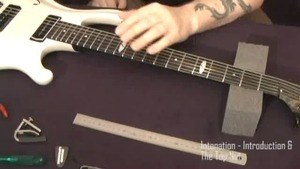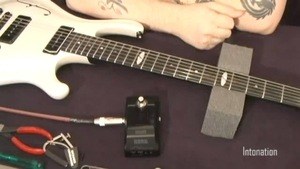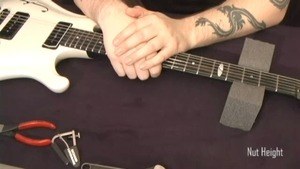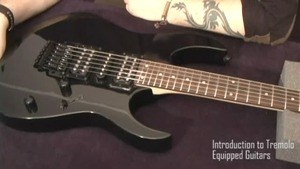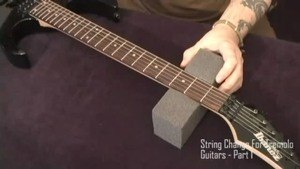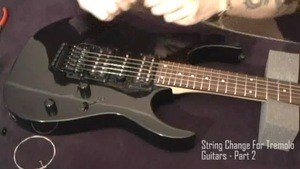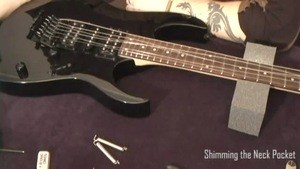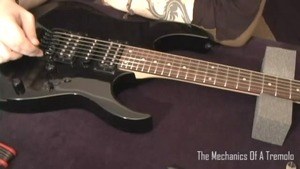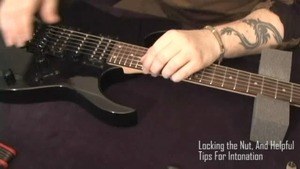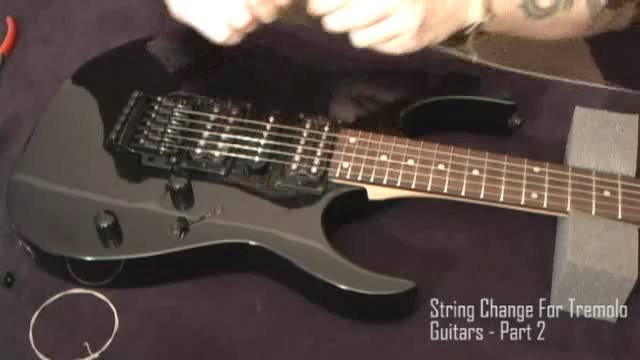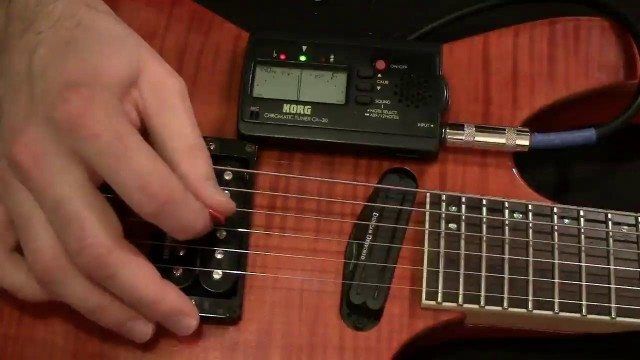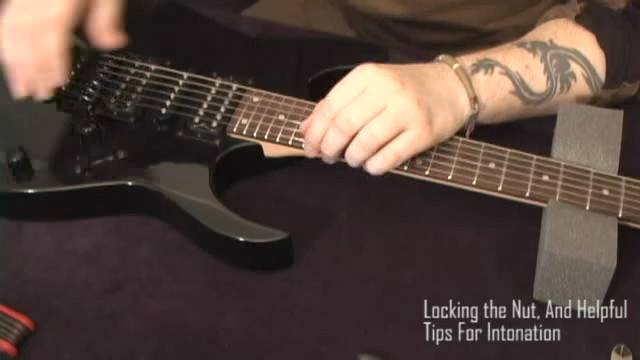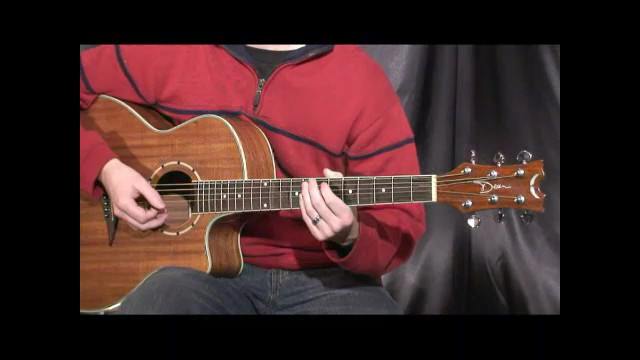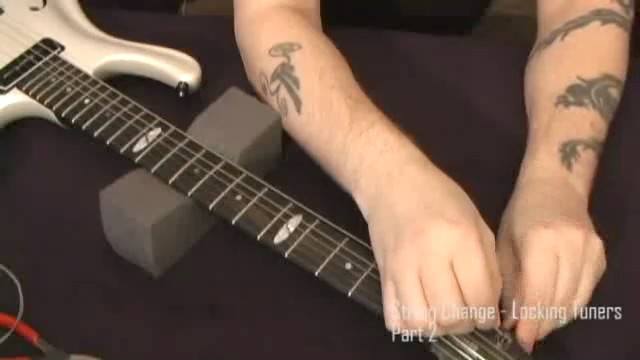History and Background.
Okay then, time for the big one, which will contain much information besides the practical intonation adjustments. Intonation is probably the most misunderstood part of guitar set-up, and a huge part of the overall sound and playability of an instrument. What intonation in short can be said to be about, is how well the guitar is in tune all over the neck. But, let’s not get ahead of ourselves, first I would like to explain in a bit more detail how the intonation of a guitar works, and finally explain why a guitar can never be perfectly in tune.
To understand the guitars intonation, it is first important to understand the intonation of other instruments. For instance, let’s take a violin. A violin is a fretless instrument, which means that the note is produced in endlessly small increments across the length of the string. What decides the accuracy is how small the contact point is (i.e. smaller fingers means greater pin point accuracy).
Anyhow, on a violin you can produce the note with great accuracy, so intonation is just a matter of your personal ability to intonate correctly (which entails good technique and a good ear). Likewise on a wind-instrument like a saxophone.
What about a piano? A piano has an individual string for each note, so theoretically, that should be perfect as well right? Well, here comes the issue of temperament. Temperament is a way of defining the notes within an octave. Before the days of Equal Temperament, pianos were tuned in Well Temperament (as demonstrated by Bach in the “Well Tempered Clavier”). This meant that the octave was not divided into equal parts, but rather adjusted among certain keys. Especially the thirds varied a lot, according to the circle of fifths, making each key of the piano sound slightly different. Thus, the Bach piece cannot be played on a modern Equal Tempered piano.
Equal Temperament means that the octave is divided by the twelfth root of 2, equally dividing the octave. However, this also means that certain intervals, like the perfect fifths, are very close to perfect. This means that you can modulate freely amongst all the 12 keys. But, the major thirds will always be a bit off. You also lose the distinguishing features tonality-wise between the different keys. So a composer from the 17 and 18 hundreds could write a piece in a certain key, because it had a certain quality (think the movie Spinal Tap, with D minor being “the saddest of all keys”). That piece could not properly be played on a modern piano, because all the keys are the same, and none of them have that special quality that Bach piano would have had when he wrote TWC.
The problem with a guitar on the other hand is often found in the bridge and top nut, which are improperly compensated to intonate the guitar well. There are many different ways to improvise the guitars intonation, such as Buzz Feiten, Earvana, Tune-X or True Temperament (TT being the most interesting of them). Feiten, Earvana and Tune-X all work by adjusting the top nut first, so that each string has an individual contact point from the string, at different lengths form the fret board. This greatly improves the intonation on open chords. TT on the other hand, has a method of curving each fret across the entire fret board to fine-tune if you will, each individual note of the guitar fret board, like a the strings of a piano.
As for the major thirds being too sharp in pitch on a piano, it is even more so on a guitar neck. You can here this very clearly in the video as I demonstrate how the major third is always a bit sharp in for example an A major chord.
How to check the intonation of your top nut
Before anything else, I repeat: you MUST allow time for your strings to set, and be played in before you attempt to intonate them. A brand new string will lower in pitch as it’s being played in, and the harmonics of the string reduces. Once again, I recommend you play, stretch and bend the strings for at least a day before intonating them.
First thing to check on your guitar is the top nuts intonation. This is done like so (you don’t need a tuner):
1. Tune the open D string, and then tune the B-string so that the D on the 3rd fret of the B-string rings in perfect unison with the open D (a perfect octave).
2. Now play the E on the D-string, 2nd fret, and the open B-string (a perfect fifth).
If this fifth interval is at all off, your top nut is not properly set.
3. Do the same thing with the Open G-string to G on the E-string.
4. And again between the A on the G-string to the open E-string.
If this interval is at all off, your top nut is not properly set.
This is VERY important to check when buying an acoustic guitar, because even if the guitar sounds and plays great acoustically, if the top nut is off at all, all your chords apart from a very select few, will be seriously out of tune.
Should your top nut be very much out of tune, fear not, you can always buy a compensated nut as described above to save the situation (Earvana even has compensated Floyd Rose nuts).


